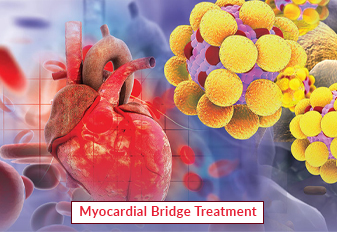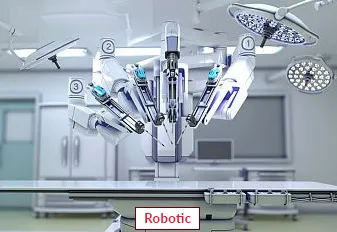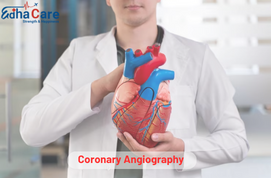Myocardial Bridge Treatment

Myocardial bridge is a condition in which a segment of one or more coronary arteries tunnels through the heart muscle instead of running on the surface. This can lead to compression of the artery during each heartbeat, causing reduced blood flow to the heart muscle. Myocardial bridge treatment aims to alleviate symptoms, improve blood flow, and restore normal heart function. In this article, we will explore the concept of myocardial bridge treatment, its significance, and the procedures involved in managing this condition.
Book an AppointmentAbout Myocardial Bridge Treatment
Treatment of Myocardial Bridge Surgery depends on the severity of symptoms, the extent of coronary artery compression, and the impact on heart function. The main goal is to relieve the compression and restore adequate blood flow to the affected coronary artery.
Procedure of Myocardial Bridge Treatment
-
Medications: In mild cases of myocardial bridge Surgery with minimal symptoms, medications may be prescribed to alleviate symptoms and manage associated conditions such as high blood pressure or high cholesterol. Medications can help control symptoms and improve overall heart health.
-
Lifestyle Modifications: Making certain lifestyle changes can support myocardial bridge treatment. These may include adopting a heart-healthy diet, engaging in regular physical activity, maintaining a healthy weight, managing stress, and avoiding tobacco and excessive alcohol consumption. These modifications can reduce the workload on the heart and promote cardiovascular health.
-
Interventional Procedures:
a. Percutaneous Coronary Intervention (PCI): In cases where medication and lifestyle modifications are insufficient, PCI may be performed. During this procedure, a thin tube (catheter) is inserted into the affected coronary artery, and a small balloon is inflated to compress the myocardial bridge, widening the artery and improving blood flow. In some cases, a stent (a mesh-like tube) may be placed to keep the artery open and prevent future narrowing.
b. Surgical Myotomy: In severe cases of myocardial bridge that do not respond to medication or PCI, surgical intervention may be necessary. The surgeon makes an incision in the heart muscle over the myocardial bridge and relieves the compression by cutting or removing a portion of the muscle. This procedure allows the coronary artery to freely supply blood to the heart muscle. -
Follow-up Care: After myocardial bridge treatment, regular follow-up appointments are essential to monitor the patient's condition, assess treatment efficacy, and make any necessary adjustments to medication or lifestyle modifications. Continued cardiac rehabilitation and long-term management of associated conditions are important for maintaining heart health.
Require Assistance?
Get A Quick Callback From Our Healthcare Experts
Other Specilities We Cover

Robotic Heart Bypass Surgery

Heart Bypass Surgery




